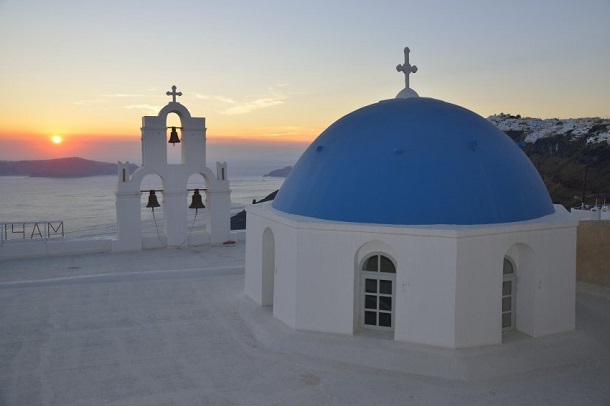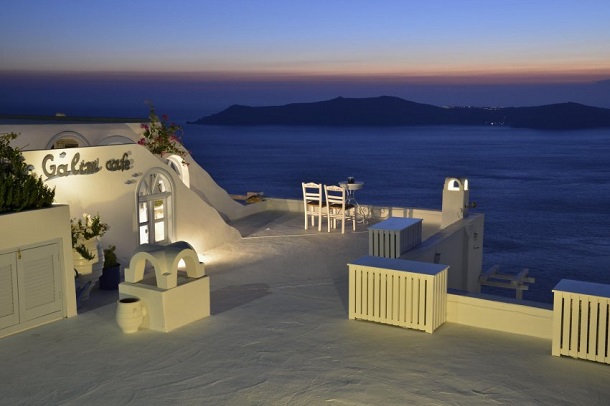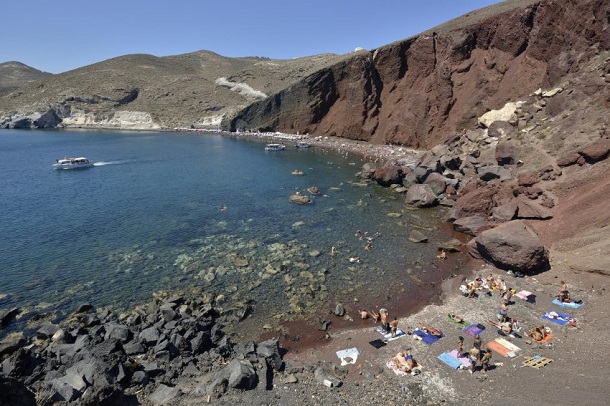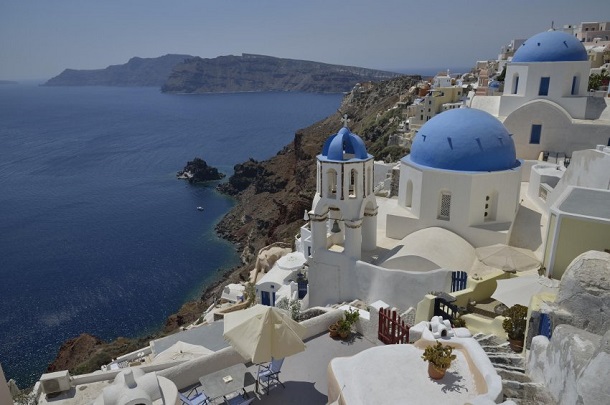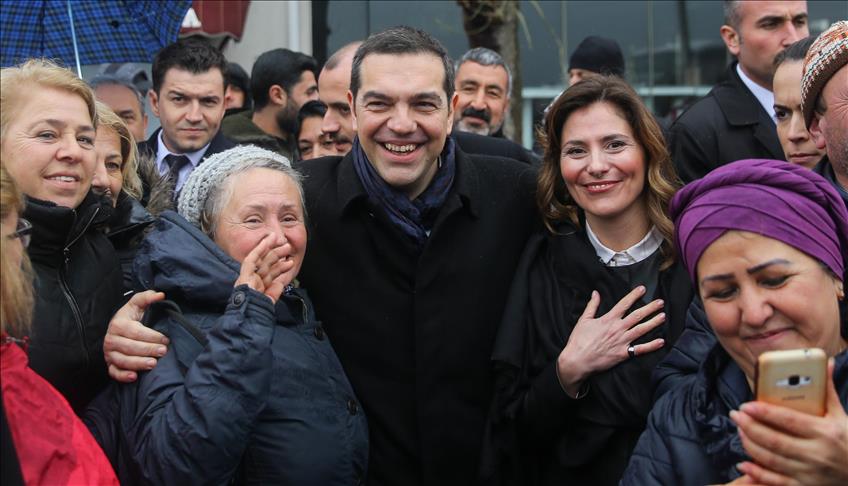Once a year, the volcanic island of Santorini seems to break: The sky is burning, it pops and thunder. But the islanders celebrate the huge spectacle with the emergence of their rocky island you – while it has long been grumbles again under the seabed.
It simmers. The volcano seems to spit fire. The whole sky is on fire. Red, yellow, green and blue sparks light up the night sky over Nea Kaméni. Silver is the sea as in the firelight.
While the guests toast to the terraces of the fine restaurants of Fira with champagne glasses, staggers the “Thalassa” on the water. As a nutshell it spills into the caldera. Again and again, the flames light up the faces on board.
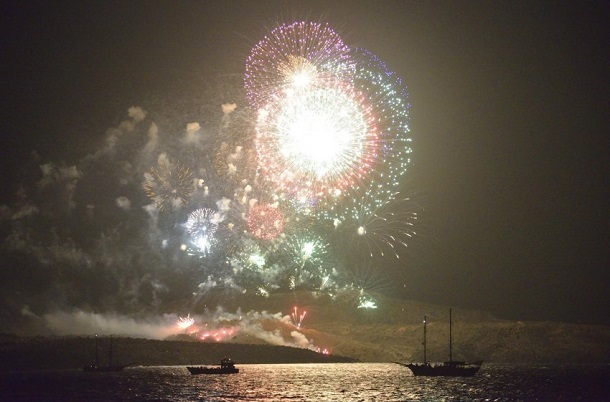
Thunder crashing, flares to rise, sparking balls bursting in the sky. Dozens necks craning up into the air to watch the spectacle. Then the captain throws the engine of the “Thalassa” on in order to access even closer to the island to be even closer to the fire.
Once a year – this time on 19 August – provide the residents of Santorini in Ifaisteia Festival by the emergence of her island. Then they build on the uninhabited island of Nea Kameni volcano crater in a huge battery of rockets, firecrackers and signal ammunition.
Hot springs at the foot of the Santorini island
The history of Santorini began around 80,000 years ago. Several underground volcanic eruptions then created a nearly circular island with a diameter of 15 kilometers. Subsequent eruptions changed again the face of the island and caused their current form. Today Santorini consists of two inhabited islands of Santorini and Thirassía and the three non Aspronissi populated islands, Palea Kameni and Nea Kameni.
And the Earth’s interior is still in motion. Signs of ongoing volcanic activity are the hot CO2 and sulfur vapors lost again, and the hot springs at the foot of Nea Kaméni. The sea is calm, keep the boats in the vicinity, and guests can swim to the sources. The evening progresses. The “Thalassa” rocks now on the ink blue water in front of Nea Kaméni.
Louder and louder, the gun salutes, always flash the flares. The fireworks should readjust the great eruption of 1630 BC. If you believe volcanologists, the eruption was one of the most violent recent history. At that time the crater rim of Santorini broke into three parts. The sky above was black around the Aegean Sea, and a 250-meter-high tsunami spread like wildfire throughout the eastern Mediterranean.
Santorini Island uninhabitable for centuries
The consequences have long been the subject of scientific debate. The volcanic eruption is said to have made the Minoan civilization on the nearby island of Crete by a giant tsunami in killing off repeatedly alleged scientists. Later, archaeologists found ceramic steps in Crete but they did not discover on Santorini.
A connection between the eruption and the collapse of the Minoan civilization is now considered unlikely. What is certain: The volcanic eruption 3,600 years ago was enormous. Santorini, then known as Thera, was then covered with a 60-meter-high pumice and uninhabitable for centuries. Especially nice swing in the volcanic history of the island at Red Beach trait, is falcate at the foot of a several hundred meter long red slag wall.
To date, there is on the Cycladic island hardly vegetation. Possibly made one of the early eruptions also for the legend of Atlantis. That the fabled city was on Santorini, this can be found in several places documents. The most famous proponent of this thesis is the Greek philosopher Plato. He spoke of a rich kingdom called Atlantis, which sank beneath the waves overnight. But there is also this until today, no strong evidence.
By 22 clock the climax is reached
It is night on Santorini. The “Thalassa” still rocks in front of Nea Kaméni. Missile swarms shoot again like a comet into the air. You might believe it was a real volcanic eruption, so loud it thunders. But it’s only man-made noise and smoke rising to the sky here.
Since the last eruption in 1950, it is quiet on Santorini. Although scientists measure since 2011 enhanced activity under the seabed. Every year, it pushes the North African plate several inches below the Aegean plate. If and when but actually a new volcanic eruption will take place, can not be predicted.
To 22 clock the climax of the fireworks is reached on Nea Kaméni. Once again, the island shines in the glow of the lights. Once again, the highest point at 122 meters of the crater island, the summit of Georgios dome, brightly lit. Then Nea Kaméni is suddenly back in the dark, and only the lights of the ships on the water can be seen. One by one, is now running to the port of Fira.
It staggers and still fluctuates a bit when entering the mainland after six hours on the water. But that’s over quickly, if you let yourself sink into the chair of the bus which takes you back to the island’s capital, Fira.
[adrotate group=”16″]
